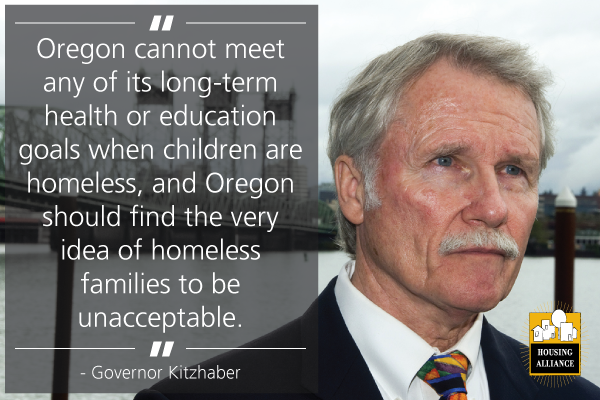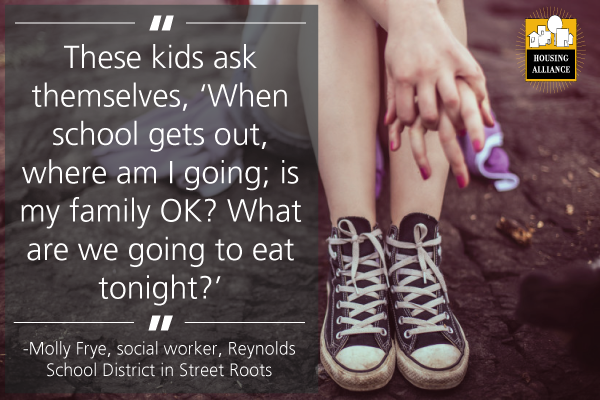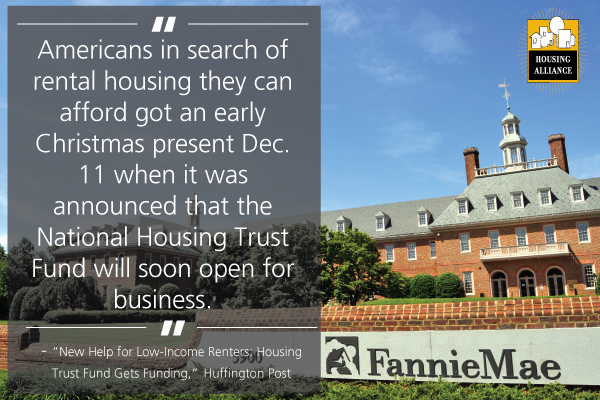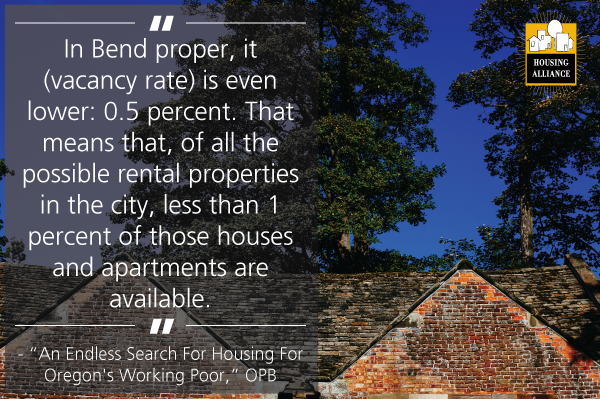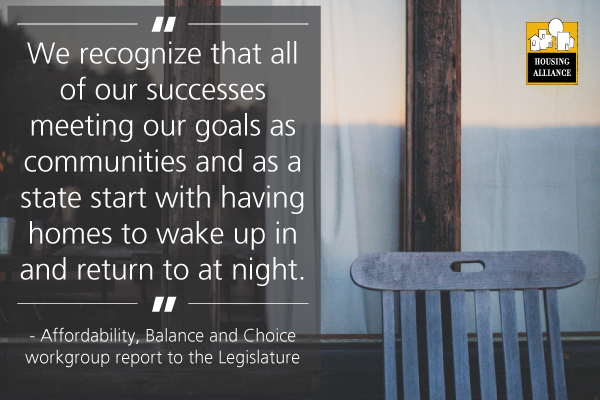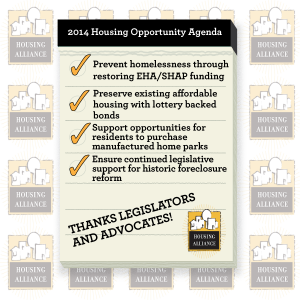If Oregon wants to build a thriving 21st century economy, send kids to school prepared to shape the future and ensure all of us are healthy and happy we must start and end our days in a home.
That vision will only become a reality because people like you continue to stand and speak up. 2014 offered reasons to be optimistic about the future of safe, quality, affordable homes for every Oregonian and some reminders that we have work ahead of us next year.
Here are the top 5 affordable home stories from 2014…
Governor Kitzhaber proposes $100 million
Housing advocates got a boost when Governor Kitzhaber released his proposed budget for 2015. In it, he’s recommending a substantial investment of other funds for housing development to the tune of $100 million ($15 million in lottery-backed bonds and $85 million in Article XI-Q bonds). It remains to be seen how the budget proposal will shape the 2015 legislative landscape, but the governor definitely raised the profile for homes as a critical investment in family success.
20,000 kids experienced homelessness last school year
Oregon’s education department released its K-12 homeless student count and the numbers were staggering. About 20,000 kids experienced homelessness during the 2013-14 school year. That’s the equivalent of almost every seat in Providence Park filled with kids who don’t know where they are going to sleep at night. It’s also double the amount of students who experienced homelessness ten years ago. In addition to funds proposed by the Governor, increased funding for programs like EHA/SHAP would go a long way toward preventing and ending homelessness. We must not just ask ourselves if we can live in an Oregon with so many suffering kids, but also if we’re willing do something about it.
The National Housing Trust Fund is finally going to flow
“Advocates estimate the contributions by Fannie Mae and Freddie Mac will generate anywhere between $300-$500 million annually starting January 1, 2015,” according to the Huffington Post. In Oregon, that means about $15 million more annually will help meet the state’s affordable housing needs. Though far from a panacea, this action provides more momentum for us to make the case that homes are a crucial part of Oregon’s prosperity plan.
It was harder than ever to find a rental in 2014
An OPB report cited: “current vacancy rates in Oregon metropolitan areas, according to the 2014 report from MultiFamily NW: Bend/Redmond: 1.06%, Portland/Vancouver: 3.46%, Eugene/Springfield: 4%, Salem & vicinity: 6.45%.” Central Oregon received local and national coverage for their housing crisis and Southern Oregon has been hugely impacted as well. The effects of a dire rental market are being felt by people across the state and across income levels. This crisis demands fierce advocacy and creative solutions. The lack of available rentals is hurting families, is a drag on the economy and poses serious health risks at a time when Oregon health care reform efforts need to succeed.
Leaders propose solutions that offer affordability, balance and choice
Creative solutions are what Oregon needs and several of Oregon’s housing leaders from government, nonprofits and industry got together to propose a policy package for 2015. Reaching a consensus wasn’t easy but it was a necessary step to arrive at real workable solutions for Oregon families. You can read the ABC Workgroup‘s recommendations here.
You helped make Oregon a better place to live
OK, we snuck another one in here. But we couldn’t close out 2014 without acknowledging that the always awesome members of the Oregon Housing Alliance helped secure huge victories in the 2014 short legislative session. You helped prevent homelessness, you helped preserve affordable housing units, you gave opportunity to people in manufactured homes and you kept the momentum going on historic foreclosure reform. Thank you, thank you, thank you for making Oregon communities safer, happier and more vibrant.

